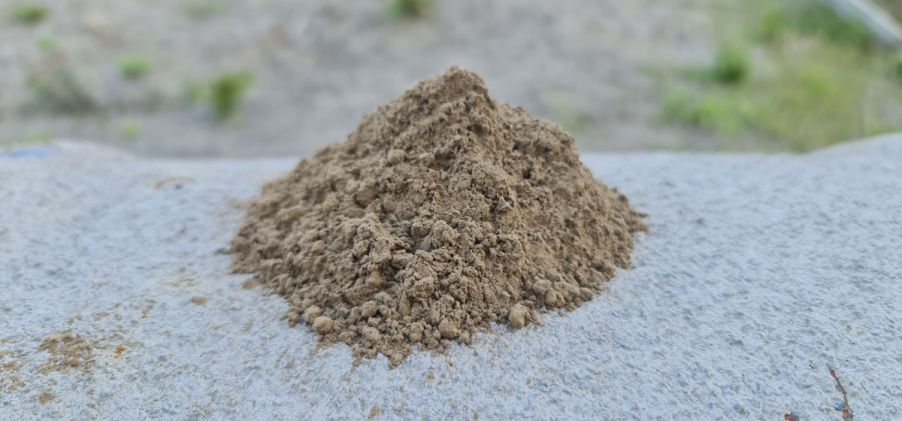Coal is a black rock that can be burned to release energy. This nonrenewable resource is made from ancient plants that died in swamps and takes millions of years to form.
Even with the rise of renewables such as wind and solar, coal remains a major source of energy around the world. Coal combustion releases a range of airborne pollutants, ash, and heavy metals that must be controlled or removed to prevent damage to our health and the environment.
For instance, the US Environmental Protection Agency (EPA) has national regulations in place for the safe disposal of coal combustion residuals produced from burning coal in coal-fired power plants. Coal combustion residuals are also known as coal combustion products, coal combustion wastes, or coal ash.
Examples of Coal Combustion Residuals
Examples of coal combustion residuals include fly ash, bottom ash, boiler slag, and flue gas desulfurization material. As the name implies, fly ash is the fine powdery material that rises with the flue gases. Bottom ash and boiler slag are coarse and heavier particle materials that form on the bottom of the furnace.
The EPA also supports responsible coal ash reuse and recycling in various products and materials, such as concrete, grout, bricks, and filler material. Reusing coal ash can provide the following economic, environmental, and product benefits:
- Reduces the use of natural resources
- Lowers greenhouse gas emissions
- Improves material strength, workability, and durability
- Replaces higher-cost materials (e.g., clay, sand, gravel, and limestone in cement)
- Increases revenue from the sale of coal ash
- Saves costs by reducing the need for disposal
Various studies have also shown the potential of coal fly ash as a neutralizing agent. For instance, there was the idea to use fly ash for the recultivation of acidic brown coal heaps in open-cast mining. The acidic environment is poison for the stability of the heaps, and the ashes are very basic due to the high lime content. As a result, it can contribute to neutralization and thus to recultivation.
To study fly ash and other coal combustion residuals, researchers often rely on microscopy and industrial image analysis software.
Coal Ash Analysis Using Deep-Learning Image Segmentation
Coal ash analysis using microscopy is useful for estimating the behavior and the reactivity of the fly ash in chemical reactions that happen through contact with other materials or media such as water, cement, or soil. In combination with a quantitative XRD analysis, an almost complete picture of reactivity can be drawn. For example, ashes with a low reactivity can be used as an aggregate in concrete, while highly reactive ashes can be used as a hydraulic binder.
Microscopy can be used to:
- Determine the proportion and the grain sizes of reactive glass phases in fly ashes
- Identify additional mineral phases
- Identify coal ash in environmental settings
Next-generation image analysis tools, such as deep-learning image segmentation, have made coal ash analysis easier and more accurate.
Consider this image analysis example of brown coal fly ash (Figure 1). This ash sample is from the retired Mumsdorf Power Station in the Central German lignite mining district south of Leipzig, Germany. Lignite, also known as brown coal, is considered the most harmful coal to human health. Lignite mines continue to close around the world as countries switch to renewable energy.
For this sample, lignite was ground up for combustion, then blown into the combustion chamber. This creates many different, tiny ash particles. The flow velocities from the combustion chamber to the exhaust gas are very high, keeping the small fly ash particles in flight. The lignite also contained minerals, which completely melted during the burning process. Highly reactive glasses (the clear spheres in the image) form from these melt droplets.
The brown coal fly ash sample also contains other mineral phases, including:
- Magnetite: black opaque spheres
- Quartz: as mineral fragments
- Lime: often rather diffused
To evaluate the brown coal fly ash, TruAI™ deep-learning technology in OLYMPUS Stream™ image analysis software was used to identify the reactive glass phase (clear spheres) from other phases. By simply training the neural network with hand-labeled images, the Count and Measure solution automates the analysis and clearly separates the melt droplets from the minerals.
Figure 1. Unlike image segmentation with conventional thresholding methods that depend on brightness or color, deep-learning image segmentation with TruAI technology can properly separate and detect melt droplets from other minerals.
Deep-learning image segmentation has many applications. For instance, the glasses in these images can also stand for many chemical products in which bubbles or spheres are used as capsules or ion exchangers (synthetic resin beads) or as a carrier material (e.g., for flavors or active ingredients).
To learn more about deep-learning image segmentation and see other examples, check out our deep-learning resource.
Related Content
TruAI Deep-Learning Technology for Industrial Image Analysis
Brochure: OLYMPUS Stream Image Analysis Software
Portable XRF for Coal-Fired Power Plants
Get In Touch



.jpg?rev=E012)